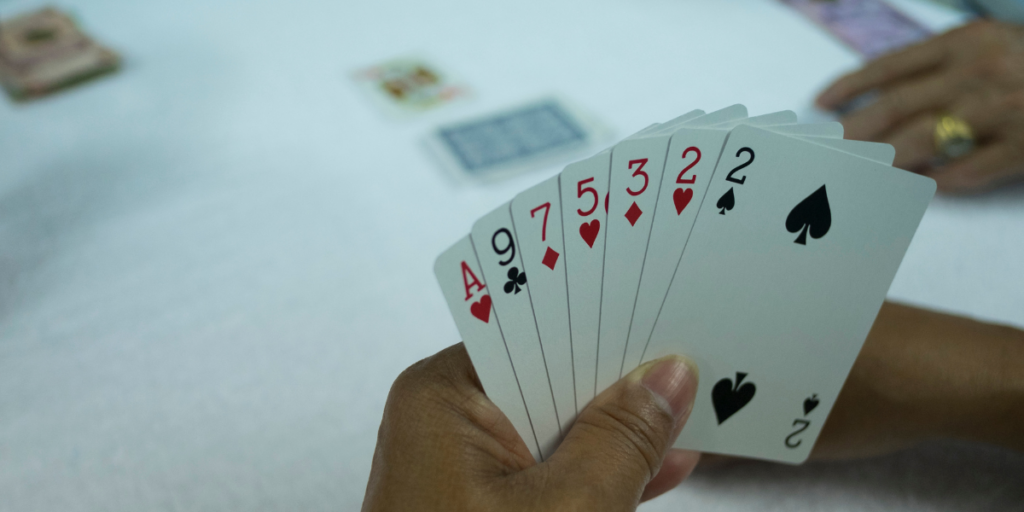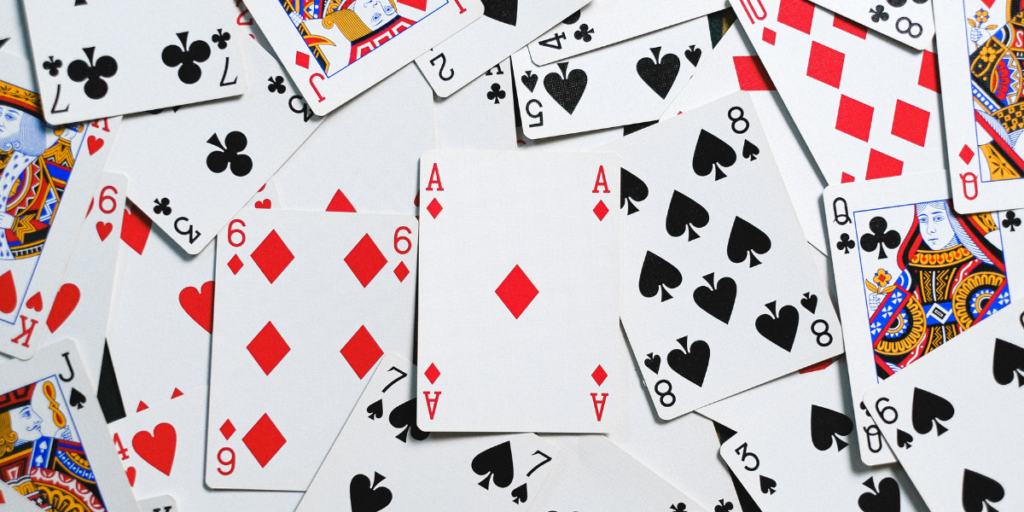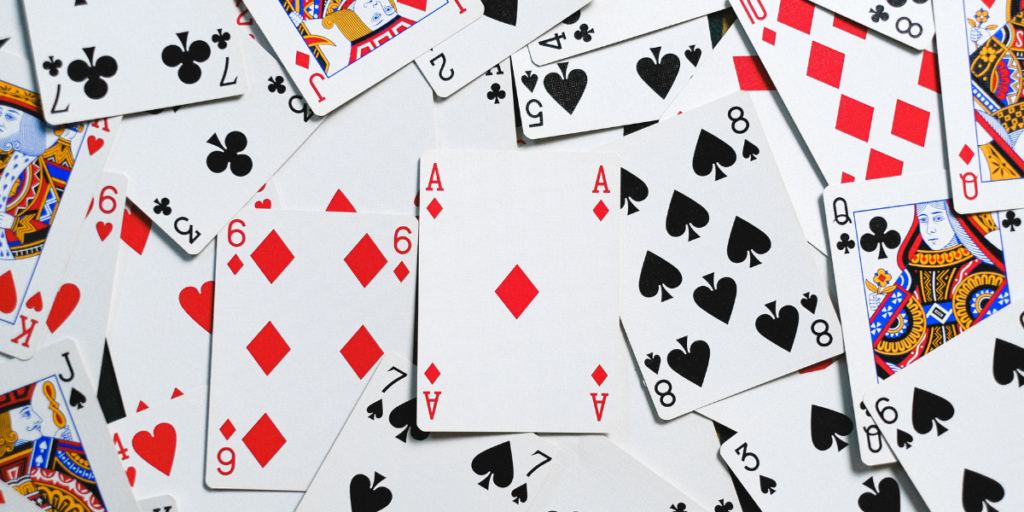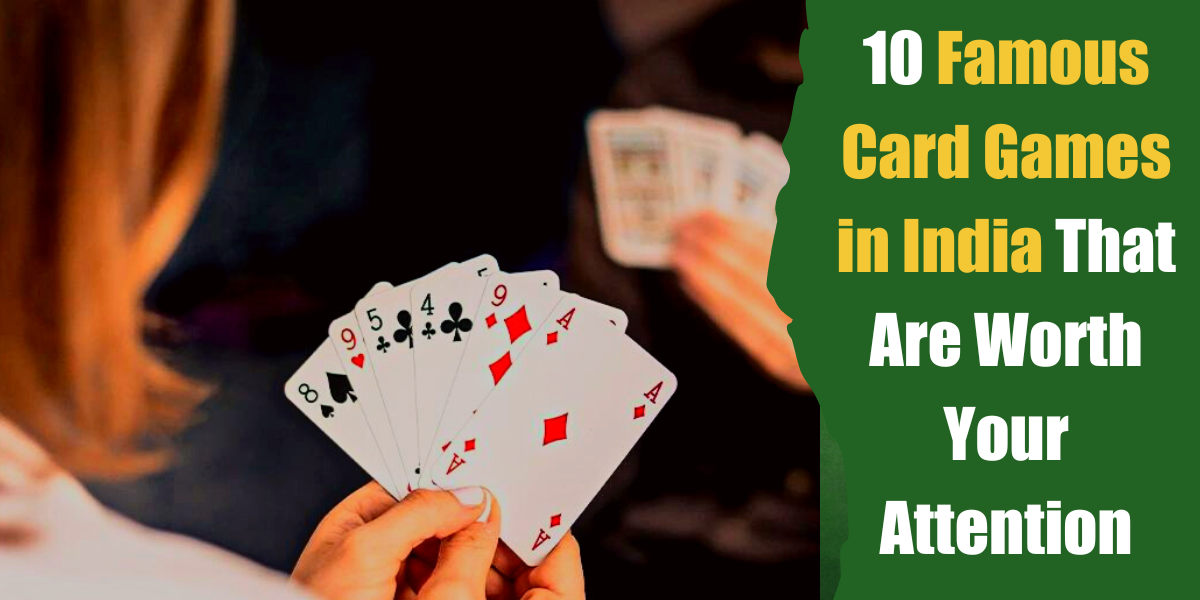Card games are a popular pastime worldwide, and I think I have played every American and English card game known to man. So, in recent years, I have become intrigued about how other countries and cultures enjoy card games, whether they are the same, and if not, how they differ.
This is why I have put together many guides on card games from other places in the world, such as this list of the most popular Spanish card games and now these famous card games in India.
I have never had the privilege of visiting India, but it’s one place that’s certainly on my bucket list of places to see in the future. I find their way of life and culture fascinating, so I took it upon myself to learn about their most played card games.
Best Indian Card Games to Learn and Play
When I first started learning how to play Indian card games, I soon realized that many don’t differ too much from familiar games in the U.S. today. It is good, as teaching others the rules is slightly more manageable.
However, some of these games will require careful instruction, so I have given you a simple brief of each game and a breakdown of the start-to-finish gameplay.
For nearly all of these games, you will need a standard deck of cards, which, if you don’t already have one, you can pick up for a meager price on Amazon. I recently purchased these stargazer playing cards, which I think add a bit of novelty to an average card game. Plus, they look super cool!
Indians tend to associate playing any kind of game with celebrations. Festivities, so when visiting India during these periods, you will likely find the locals engrossed in competitive yet friendly matches of poker, rummy, and other popular card games.
I suppose it’s a similar tradition to how we gather, eat food, and play games with the family on Christmas Day or Birthdays.
It may be true that many Indian card games are now played virtually. Traditional versions with a real deck of cards are still a popular choice in many Indian households.
So, let’s find out what the most famous Indian card games are.
1. Poker
Indian Poker takes traditional poker rules in a whole new direction. If you’re already an experienced poker player and would like to mix things up, bring a unique twist to your next poker match. Then learning the rules of Indian poker might be something you’d like to consider.
For a start, one of the primary aspects of Indian poker is that players will attach a card to their head to represent an Indian headdress. This means you don’t see the card on your head, but the rest of the players do.
Like in a classic poker game, players can raise, fold, or call to try and win a chance to enter the showdown, where the player with the highest-ranking card will win the pot.
The good thing about Indian poker is that it can be played anywhere from two to eight players. I think the more, the merrier, and the more exciting the game.
All you will need to play the game is the standard deck of cards I spoke about earlier, but if you want to make things more authentic, you could invest in some poker chips too, which will add to the fun. If you wish to bring the feel of the casino to your home, then this deluxe poker set will impress your guests.
2. 3-2-5
One thing I love the most about learning games from other traditions is where they came from and how long they’ve been part of the culture, which is why 3-2-5 is an excellent one to discuss.
3-2-5 is played by locals from India and surrounding areas such as Pakistan and is one of the oldest games of the culture that is still enjoyed today. Although many people now enjoy it online, I think the authentic way is much more enjoyable.
This is a trick-taking type of card game played with thirty cards, in which players have a quota of two, three, or five and must try to win a minimum number of tricks.
If you want more of an understanding of the technicalities, check out my guide on the Sergeant Major card game, which is played with a similar set of rules.
3. Indian Paplu (Rummy)

Paplu, as it’s called in India, is what you might already know as rummy. If you’ve ever played any versions of rummy before, you’ll already have a good understanding of gameplay rules.
This exciting game is played using multiple decks of cards, and there are many surprises along the way in the form of wild cards and special moves.
The game begins with each player having a thirteen-card hand. Jokers are included as these will be the wild cards and can take the form of any other card.
Players take turns drawing a card from the discard pile in the hope of adding it to their hand to form a meld. If you can do this, you may then discard one of your cards to the discard pile.
Melds are as follows:
- Set: Three or more cards ranking the same.
- Run: Three or more cards in consecutive sequence.
- Natural Run: Three or more cards in consecutive sequence minus wildcards.
- Triplets: Three cards ranking the same and of identical suit. (No wildcards).
Your last turn is taken if you’re thirteen cards from one of the above melds, at which point you can declare rummy, at which time the points are added up, which are scored as follows:
- Wild Cards: No points
- Numbers: Card value
- King, Queen, and Jack: 10 points
- Ace: 11 points
Once the scores have been totaled, all points go to the player who called rummy.
4. Teen Patti

Teen Patti is a game that shares many similarities with poker and is played with a three-card hand. The game can be played with three to six players, and at the beginning, all players must place a minimum bet on the pot in the middle of the playing area.
The game aims to be the last person standing with the highest-ranking hand. This is done by folding, calling, or raising the previously played card.
Unlike poker, there are a couple of extra moves that you can use to try and outsmart your opponents. It is known as a sideshow, where you can request a previously seen player’s cards or a showdown. It is here where all players are forced to show their cards once the pot reaches its limit.
5. Blackjack

A game I was surprised to learn is played the same way no matter where you go in the world is blackjack, and it’s probably one of my all-time favorite card games.
Believed to originate in the Spanish regions, you’d be surprised how far this 17th-century game has come, with it now being enjoyed in countries worldwide.
What I love the most about this game is that although it involves quite a lot of thought and strategy, it’s very straightforward to understand.
The main aim of the game is to get as close to 21 points as possible, or ideally, precisely 21 points. However, you cannot exceed this, or you will instantly forfeit.
Building your hand involves taking hits (being dealt another card) or a stick. This will depend on how close your hand is to 21 and whether you want to run the risk of collecting an additional card, because don’t forget, even point over 21, and you’re out of the game.
The most traditional way to play this game is without any verbal communication. It is to indicate you would like a hit, you must give a specific hand gesture or tap on the table to make it known to the dealer what you would like to do.
Luck is the main factor in this game, and although it can get quite tense, it’s tons of fun.
6. Bridge

When I was younger, I was always under the illusion that bridge was something older people played at their local social club. It wasn’t until being taught to play it in a local pub one night that I learned that’s not the case at all, and it’s great fun. And it’s just as popular in India as in the U.S.
The game requires four people to play and uses a standard deck of 52 cards. The game aims to score as many points as possible to beat your opponents.
You begin the game with thirteen cards, and during each turn will play a card of the highest rank and suit. To play, you must place down a card following the previous player’s suit. However, you may place down any other suit if this can’t be done.
Cards are ranked in the usual order of Ace being the highest and two being the lowest. However, in the bridge, spades are ranked high at 50 points, and diamonds, hearts, and clubs are ranked low at 20 points.
If you’re eager to learn more, you should check out my complete comprehensive guide on how to play bridge.
7. Bluff

Bluff is a game played worldwide, including in India, with four players ideally. However, you can play with more or less if you desire. It is played with a full deck of 52 cards distributed evenly between the players. If you’re playing with more than five people, you will need two decks of cards.
First, a player will place down several cards, declaring what they are but placing them facedown on the table. They must be of the same rank. However, the secret is that you don’t have to tell the truth about which cards you played.
The rest of the players must then try to determine whether or not you’re bluffing. If you are not bluffing, and someone calls you out, they get to collect the cards you put down, but if you were bluffing, you must take your cards back, and the turn moves to the person who called you out.
The idea is to get rid of your cards before the rest of the players, and the first person to do so wins the game.
It’s a straightforward and addictive game, which I find perfect for playing with the family, as the little ones can get involved too.
8. Satte Pe Satta

Satte Pe Satta is a brilliant card game played between three and eight players and requires a single deck of standard cards. The game is so prevalent in India that even a Bollywood movie is named after it.
The objective is to rid yourself of your hand before everyone else. Once the cards have been divvied out equally to all players, the person holding the seven of hearts takes the first turn, and the next person can then play either a six or an eight of hearts. The suit can only be broken by playing a seven of another suit.
If you don’t have the desired card, you may pass or “knock,” meaning you pass your turn. However, you must take your turn if you have a playable card.
The game continues until the first person has discarded their cards, making them the winner.
Overall, this is an extremely simple game that people of all ages can enjoy.
9. Donkey
During Donkey, you aim to be the first person in your group to get four-of-a-kind. To play, you will need to pick up a deck of Rook playing cards consisting of 56 cards.
You’llYou’ll need to be a quick thinker to play Donkey, as one of the primary skills required is speed. At the same time, players pass their cards to the left and take from the right, trying to form the combination they need.
Once you have four-of-a-kind, place your cards face down, and put your hands beneath the table, do this as discreetly as possible. As each other player notices that you’ve won, they will also place down their cards and put their hands underneath the table. The last person to do this will be the Donkey, who will have to get up and run around the table while yelling, “Hee-Haw!”. It, of course, is hilarious to watch, making this one of my favorite games to play for a good laugh.
If you like the sounds of Donkey, then you might enjoy this guide on how to play the Spoons card game. The two are quite alike in their method.
10. Andar Bahar

Andar Bahar is a popular Indian card game that is now often played online. However, I will tell you about the traditional version played with cards.
Everyone places a bet at the start of the game on how they think it will play out and what the outcome will be, so it’s all about guessing and the luck of the draw.
The dealer starts by placing one card in the center of the playing area before alternating cards to the left and right of the middle card, one at a time.
When one of the cards matches the card in the center, depending on which side the matching card lands on, it’s a 50/50 chance of winning depending on which side you placed your bet on.
This might seem like a straightforward game, and you’d be correct, but it’s fast-paced, tense, and competitive.
To Sum Up
So those are my favorite Indian card games to play; which one will you start with and introduce to your friends and family? One thing is for sure; you’re bound to impress everyone with your newfound knowledge of Indian card games.
If you want to surprise everyone with even more games from around the world, check out this fascinating guide on Japanese card games.




